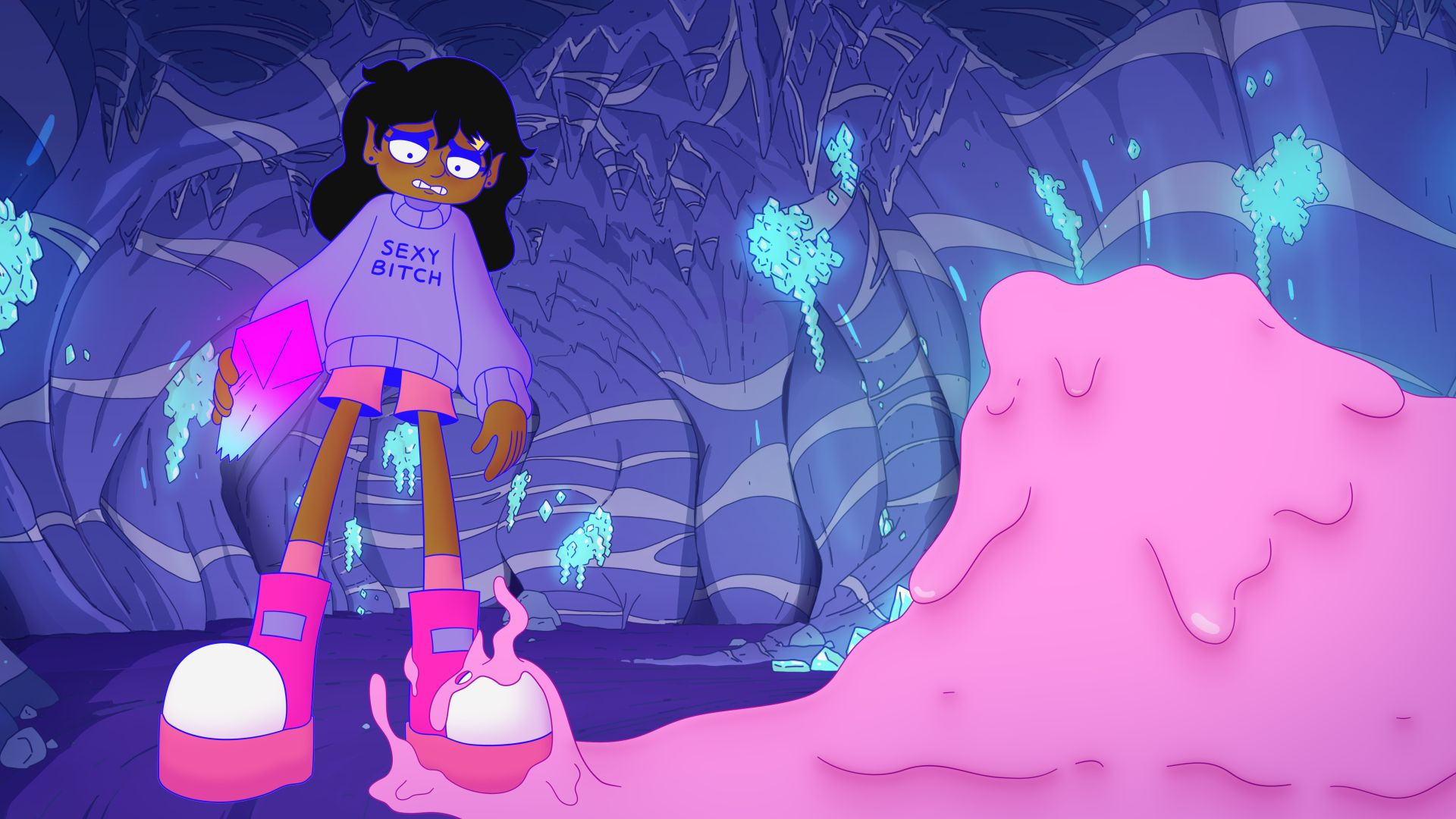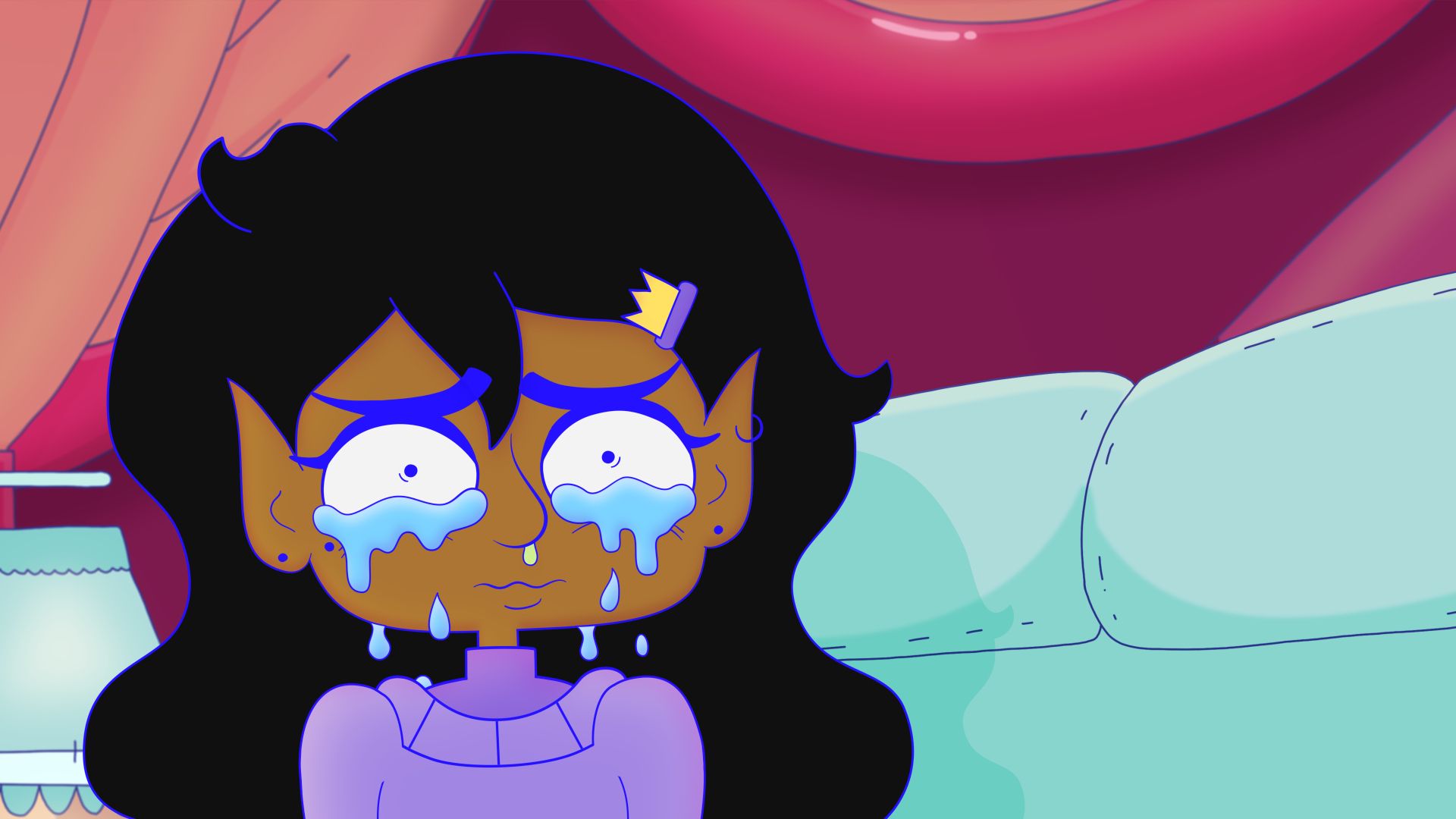
Just picture this: being broken up with on your 23rd birthday, in front of everyone at your party – including your overly cheerful parents who don’t even know your real age. And to top it off, you’re a royal who’s supposed to magically summon an axe as part of a coming-of-age ceremony, but your anxiety is getting in the way. That’s the difficult situation Saira, the main character in Emma Hough Hobbs and Leela Varghese’s animated film Lesbian Space Princess, finds herself in. She’s a relatable, introverted person struggling to cope.
Saira’s journey is just getting started! Hobbs and Varghese have created an entire “Gay Space” universe for her to explore, filled with playful (and sometimes silly) names and jokes. It’s a classic coming-of-age story where Saira has to face her fears and mature as she tries to save her ex-girlfriend from the villainous Straight White Male-ians (played by the comedy group Aunty Donna). Along the way, she meets a host of eccentric characters, like a drag queen who sells weapons (Kween Kong), a nonbinary pop star (Gemma Chua-Tran), and even a spaceship with a deliberately outrageous name (the Problematic Ship, voiced by Richard Roxburgh). It’s all wonderfully absurd, and that’s exactly what makes it so enjoyable.
It’s clear that shows like Steven Universe and Rick & Morty (along with many others from Adult Swim) have heavily influenced Lesbian Space Princess. From Steven Universe it borrows a straightforward portrayal of queerness, character designs inspired by anime, and frequent use of songs to express emotions. Rick & Morty’s influence appears in the show’s sarcastic humor and the way its characters constantly play with and subvert common pop culture clichés. In terms of both its style and overall feel, Lesbian Space Princess is more similar to these adult animated comedies – not just because it occasionally features silly, over-the-top visuals, but because it embraces a deliberately rough-around-the-edges aesthetic while still demonstrating a strong visual style.

Cineverse
The film is certainly funny, delivering around a joke per minute. While many of the jokes rely on predictable tropes – often focusing on stereotypes about lesbians or straight men – they’re likely to resonate with the intended audience. The film is packed with references to popular culture, including shows and movies like Twilight, Sailor Moon, and Revolutionary Girl Utena. Similar to BoJack Horseman, these references are often subtle, appearing as small details in the background or on props, especially relating to a recurring, somewhat controversial, storyline.
The movie’s tone is all over the place, switching between simple, almost childlike emotions and jokes clearly meant for adults. It can get tiring after a while—even some viewers have noted the constant use of singing with acoustic guitar—but it seems made for people who used to spend a lot of time on platforms like Tumblr or Archive of Our Own.

Cineverse
The movie Lesbian Space Princess feels deeply immersed in internet culture, relying heavily on inside jokes and self-deprecating humor. Its structure and story feel inspired by fanfiction, blending familiar tropes in a way that aims to provide comfort and familiarity for queer viewers – similar to popular young adult fantasy novels on platforms like BookTok. While it’s a sci-fi adventure with queer representation, it lacks a unique identity, simply alluding to ‘unapologetic queerness’ without offering much beyond well-worn observations already explored in other works. It’s undeniably a film made by and for queer people, but it doesn’t present any particularly new or insightful ideas.
Despite any shortcomings, smaller animated films like Lesbian Space Princess are important, especially now. With increasing negativity towards LGBTQ+ people, we need more projects like this. It’s great to see a proudly queer animated film, even if it’s similar to many less-critiqued projects made by straight, cisgender men – a point the movie itself playfully highlights. While it could be improved, many queer young people and millennials will likely enjoy it. Ultimately, everyone deserves to see art that represents who they are, even if it’s a bit awkward.
Read More
- Mobile Legends: Bang Bang (MLBB) Sora Guide: Best Build, Emblem and Gameplay Tips
- Clash Royale Best Boss Bandit Champion decks
- Best Hero Card Decks in Clash Royale
- All Brawl Stars Brawliday Rewards For 2025
- Best Arena 9 Decks in Clast Royale
- Clash Royale Witch Evolution best decks guide
- Vampire’s Fall 2 redeem codes and how to use them (June 2025)
- Brawl Stars December 2025 Brawl Talk: Two New Brawlers, Buffie, Vault, New Skins, Game Modes, and more
- Call of Duty Mobile: DMZ Recon Guide: Overview, How to Play, Progression, and more
- Clash Royale Furnace Evolution best decks guide
2025-10-28 18:37